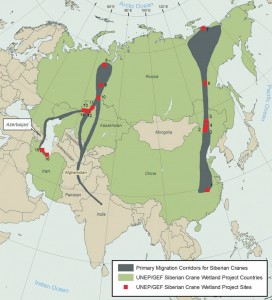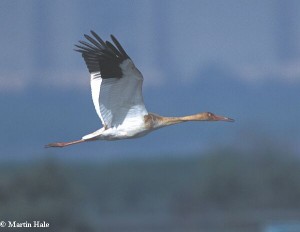by Gabriela Schaepman-Strub
Kytalyk, July 4, 2013
This is the fourth time I am spending fieldwork time out here in Kytalyk. Every year is special in some way. 2008 was very wet, the water level of the river only went down very late in the season; 2010 was very hot. 2012 was the year of the flowering cotton grass, mimicking snow-covered landscapes, beautiful! This year is a lemming-year, meaning a promising year for the Siberian crane hatchlings. The Kytalyk nature reserve was established for the protection of the Siberian crane, a crane that is overwintering in China (Poyang lake) and migrating north to reach the tundra for breeding in summer time. It was the last crane that was scientifically described. The locals here call it ‘Kytalyk’, the name they also gave to this nature reserve. The Siberian crane is a sacred bird: there is a saying that once you have seen a Siberian crane, you will be happy for the rest of your life! Until now we have only seen sandhill cranes this year, a crane species with brownish feathers migrating from America, extending its nesting habitat further West every year. But also the Siberian cranes are doing well lately: according to ornithologists from Yakutsk, it’s population is increasing.

Project Map Migratory routes Siberian Crane & project sites (site 7 is the Kytalyk site) (Map: www.thegef.org).
A science year!
2013 is not only a good year for Siberian cranes…. During the last 5 days we had been selecting an ideal site representing the two dominant vegetation associations of the area, carrying many kilos of equipment across the tundra, hammering holes into the permafrost for poles (the new drill working with steam of our colleagues did not work as expected – one coring tube is still stuck in the permafrost, while the old drill is broken), mounting radiation sensors, adjusting screws, connecting cables.
Yesterday we finally received the missing two boxes – they were located in Yakutsk and after our request on Monday they arrived with the next plane on Wednesday, delivered to Kytalyk by boat the same evening – real home delivery service!
The previously missing few essential parts allowed us today to get the two small energy balance towers up! After hundreds of hours of proposal writing, frustration about rejections, revisions, excitement after approval, selection of a PhD student, finally the vision of measuring the impact of different vegetation types on the shortwave energy balance in the tundra has become true. Thank you, Inge, for your substantial contributions, hard work, your patience and for sharing the enthusiasm that is needed to make this happen, especially on cold days like the one today!
PS: As soon as we have solved the problem with the software version of the data logger that has been out here in Siberia already (no opportunity to test that one at home…) we will report about the day of the first data recorded!
PPS: Stay tuned for first pictures!

